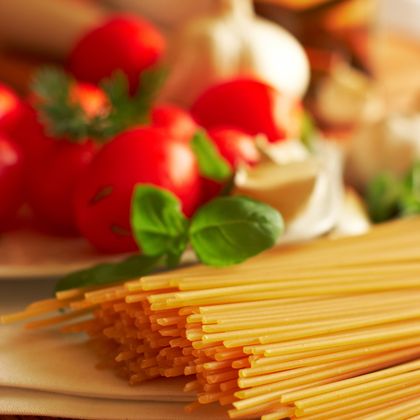Carbohydrate

Carbohydrates are compounds composed of carbon, hydrogen, and oxygen. The carbohydrate group includes sugars, starches, and cellulose. Sugars and starches provide organisms with energy for cell functions, and cellulose is a fibrous substance making up plant cell walls.
The role of plants
Carbohydrates are produced by green plants through a process known as photosynthesis. In photosynthesis, a pigment called chlorophyll (pronounced KLOR-uh-fill) in the leaves of plants absorbs light energy from the Sun. Plants use this light energy to convert water and carbon dioxide from the environment into glucose and oxygen. Some glucose is used to form the more complex carbohydrate cellulose, the main structural component of plant cell walls. Some is used to provide immediate energy to plant cells. The rest is changed to a different chemical form, usually starch, and stored in seeds, roots, or fruits for later use.
The carbohydrates produced by plants are an important source of energy for animals. When animals eat plants, energy stored in carbohydrates is released in the process of respiration, a chemical reaction between glucose and oxygen to produce energy (for cell work), carbon dioxide, and water. Glucose is also used by animal cells in the production of other substances needed for growth.
Types of carbohydrates
Carbohydrates are usually divided into three categories: monosaccharides, having one sugar unit; disaccharides, having two sugar units; and polysaccharides, having many sugar units. The arrangement of atoms in different carbohydrate molecules gives each its specific properties.
Among the most important monosaccharides are glucose (found in plants and animals), fructose (a fruit sugar), and galactose (formed from the milk sugar lactose). Glucose is especially important in vital life processes. Each of these simple sugars is made up of the same number and types of atoms, arranged differently. All three are readily absorbed into the bloodstream from the digestive tract.
Disaccharides are carbohydrates composed of two subunits of simple sugars. They include sucrose (ordinary table sugar), maltose (formed from starch), and lactose (found in milk and the only sugar not occurring in plants). Enzymes in the digestive tract of humans and animals split disaccharides into the more easily absorbed monosaccharides. For example, sucrose is split into the simple sugars glucose and fructose during digestion.
Polysaccharides are the most abundant carbohydrates. A polysaccharide molecule can contain thousands of glucose units. These highly complex carbohydrates include starches, cellulose, and glycogen. Starch is the usual form in which carbohydrates are stored as energy by plants. Plants can split starch into its simpler glucose units for use as energy when needed.
Cellulose is known as a structural carbohydrate because of the fibers formed by its molecules. It is the major component of plant cell walls and comprises over half of the carbon found in plants. Humans and most animals cannot digest cellulose for food but use it as a fiber (often termed roughage) to help in the elimination of waste by the intestine. Some grazing animals such as cows and sheep have microorganisms in their digestive tracts that partially digest cellulose, allowing these animals to use cellulose as food.
Glycogen is the form in which glucose is stored in the liver and muscles of animals for energy needs. Muscle glycogen is used primarily to fuel muscle contractions (such as during exercise). Liver glycogen is used to restore glucose to the blood when the sugar level is low (such as between meals).
[ See also Photosynthesis ]
what are the physicochemical properties of polysaccharide
why is it more suitable to feed ruminants with feeding stuffd containing cellulose than monogastric